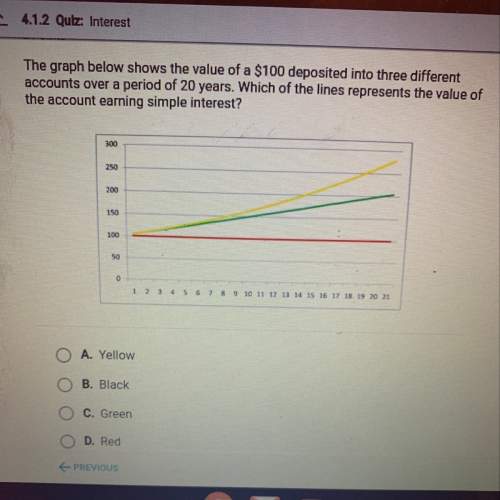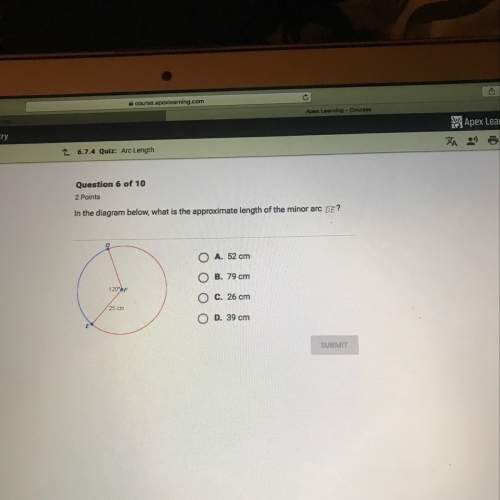
Mathematics, 24.01.2020 05:31 bakoeboo
Given y = 3/4(x + 5)² - 6, which of the following is true?
1) the quadratic equation is written in vertex form, the axis of symmetry is x = -5, and the vertex is (-5, -6).
2) the quadratic equation is written in vertex form, the axis of symmetry is x = 5, and the vertex is (5, -6).
3) this equation is not a quadratic equation.
4) this equation is quadratic, however, the axis of symmetry and vertex cannot be determined at this time.

Answers: 1


Other questions on the subject: Mathematics

Mathematics, 21.06.2019 12:50, vandarughb2875
Asequence of numbers begins with 12 and progresses geometrically. each number is the previous number divided by 2. which value can be used as the common ratio in an explicit formula that represents the sequence? 1/2 2 6 12
Answers: 3

Mathematics, 21.06.2019 16:30, maycigrimaldi4990
Problem fathi wants to print out a pdf document that is 48 pages long. to save paper, he decides to print on both sides of each sheet and to print two pages on each side of the sheet. how many sheets of paper will he need?
Answers: 3


Mathematics, 22.06.2019 01:00, justkevin1231
You went to a restaurant and spent $53.25 on the meal. there was a 6% sales tax. what was the amount of money, not including a tip, you spent at the restaurant?
Answers: 1
You know the right answer?
Given y = 3/4(x + 5)² - 6, which of the following is true?
1) the quadratic equation is writt...
1) the quadratic equation is writt...
Questions in other subjects:

Mathematics, 11.10.2019 11:30


Mathematics, 11.10.2019 11:30



Health, 11.10.2019 11:30



Mathematics, 11.10.2019 11:30






